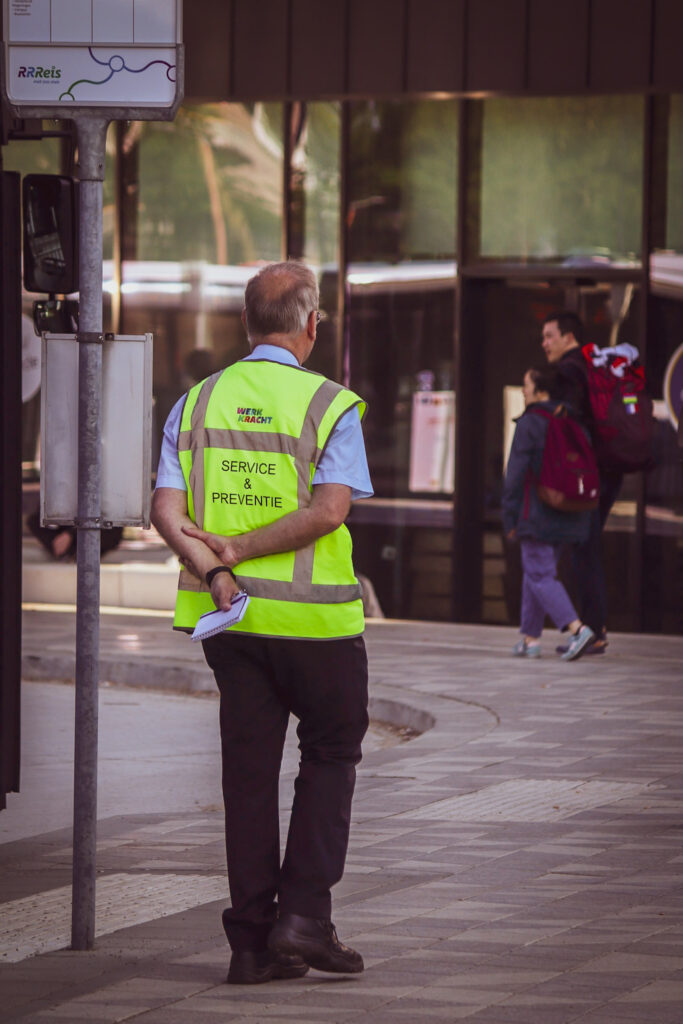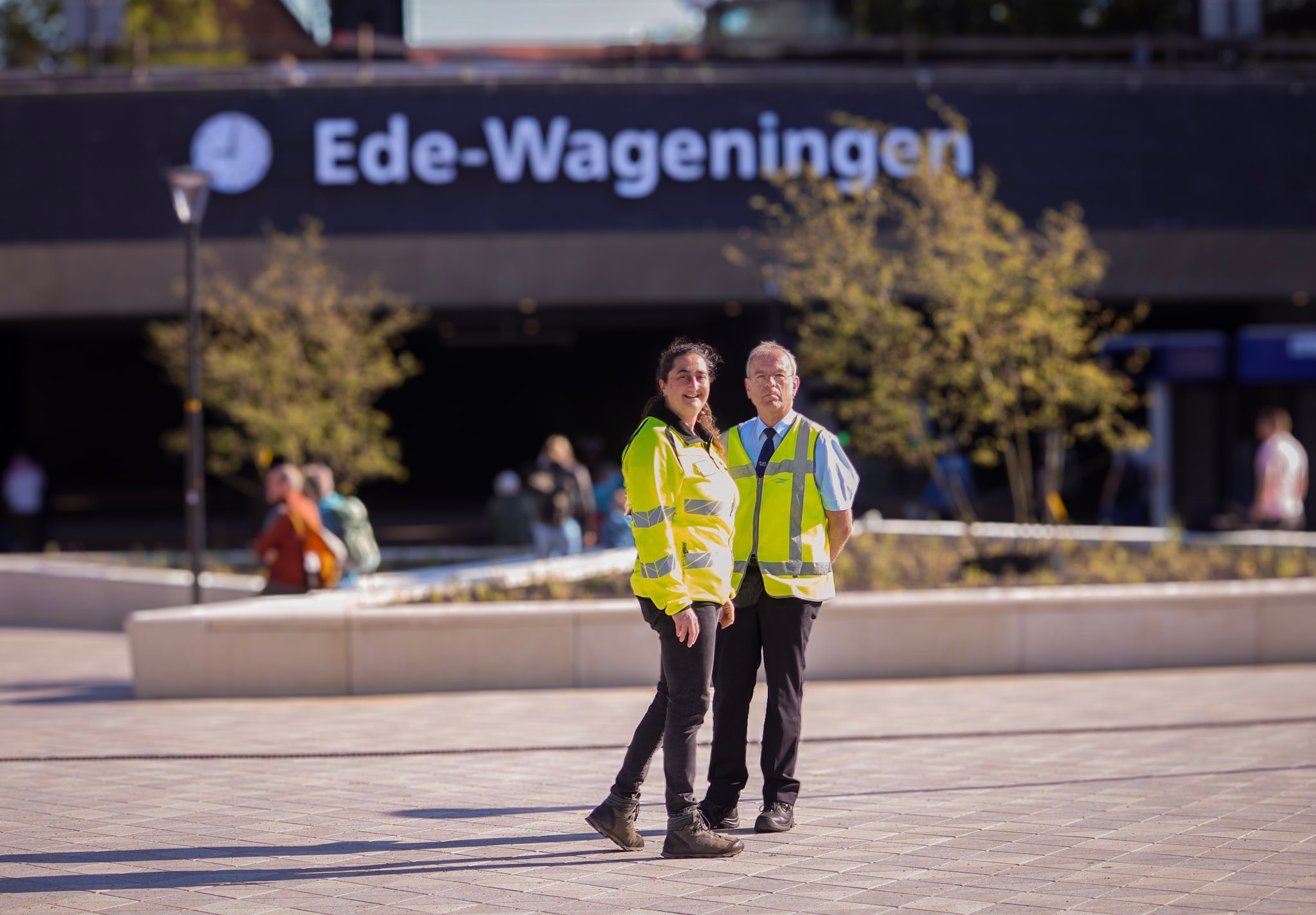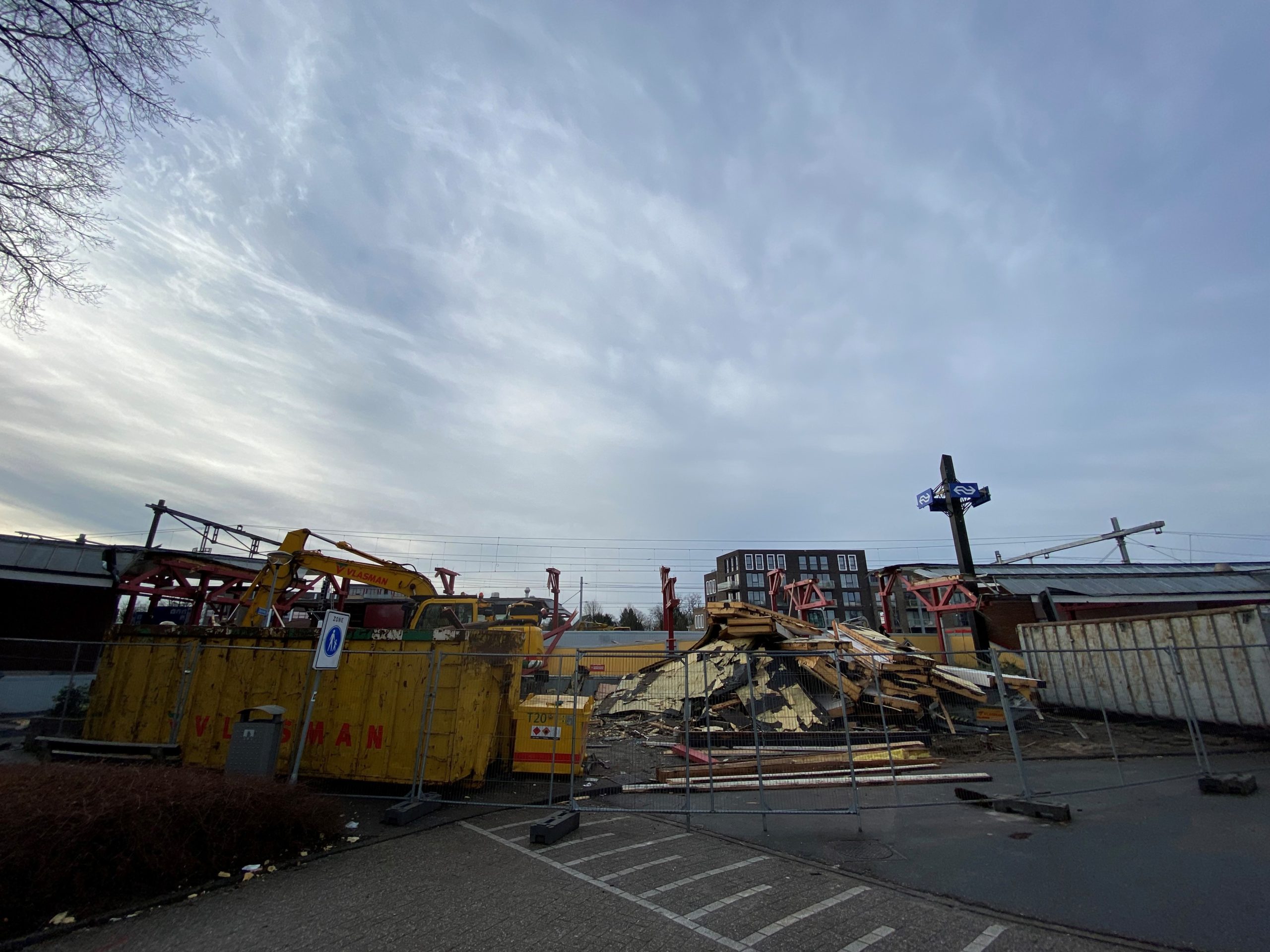Sometimes, there is just one, but usually more. They travel on bus 303 or 103 to the campus but often stay behind at the bus stop. With a notebook, a pen or pencil, and a yellow vest with the text “service and prevention” on the back. Who are they, and what are they doing? Resource investigated.
‘The yellow vests are part of the Valleilijn project by sheltered employment development business Werkkracht’, says Sandra Babukhan, coordinator and work supervisor for this project. ‘We implement the participation law on behalf of Ede municipality. That means that people on welfare who are unable to take the next step towards employment are assisted in re-entering the employment market.’

Door
‘For example, we offer “boarding assistance” by informing passengers that there is another entrance at the back of the bus. And our presence on the platforms encourages travellers to check in as required, according to the bus drivers’, Babukhan says.
‘Working here provides the candidates with the daily rhythm they need and helps them prepare for the next step: work if that is possible, or daytime activities if that is a better fit. Most candidates spend five weeks to five months doing this work, which teaches them a lot, also about themselves.’
Werkkracht partners with the Valleilijn transportation company, called RRReis. Babukhan: ‘Our candidates were initially trained to work in security. They learned to “observe, alert and report”, skills that are very useful in that sector. At present, not everyone moves on to a job in security, but the skills they develop here are useful in any working environment.’
Extra eyes and ears
The people in the yellow vests also answer any questions travellers may have in and around the station, monitor the crowd and provide the city, law enforcers and transport companies with information. ‘For example, on broken screens in the bus or train, trash around the station or the number of cars and scooters parked in certain spots.’
‘We are the enforcement, travel companies and city’s extra eyes and ears’, Babukhan explains. ‘Our information helps decide whether cleaning company Asito is commissioned or helps the city decide about more or fewer parking spots. Our bicycle count helped the city decide how many bike parking spots were needed in the guarded bicycle parking. We are currently counting for the benefit of the new P+R facility the municipality intends to construct.’

 Assistant supervisor Jan van Riessen and work supervisor Sandra Babukhan. Photo Sanne Kroesbergen
Assistant supervisor Jan van Riessen and work supervisor Sandra Babukhan. Photo Sanne Kroesbergen ![[Seriously?] Station gets new name](https://www.resource-online.nl/app/uploads/2024/03/WEB_De-neus.png)

